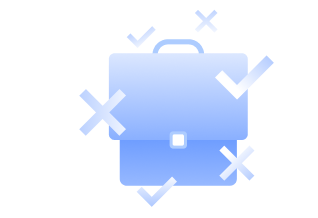How to use ChatGPT for data and business analysis tasks
This article highlights the ways ChatGPT can help you streamline your data and business analysis tasks. It contains practical tips and examples of how you can work with the powerful AI tool on a daily basis.
The author of this article is EPAM business intelligence analyst Konstantin Kuts.

What is ChatGPT
Nowadays, we hear about ChatGPT and its ability to do almost anything for us from almost every news and social media outlet. But what exactly is this fancy new app that everyone is so excited about?
ChatGPT is an online chatbot that is developed based on artificial intelligence and trained with language models. It can understand and generate natural language (the language used by humans to communicate with each other). That is a very important ability because it makes ChatGPT a “Google alternative” and also a useful tool for business analysis.
This might sound crazy, but chatting with ChatGPT can often feel like talking to a real person! The fact that it understands and provides you with answers in a natural language within the context it almost scary.
Examples of using ChatGPT for daily tasks
ChatGPT users have numerous opportunities of applying it for business and data analysis. I’ll focus on the following useful use cases for ChatGPT:
- Learning a new technique.
- Completing text classification tasks.
- Creating templates and documents.
- Brainstorming for new ideas.
- Planning a meeting or a workshop.
Note 1: Please be aware that it is not recommended that you “feed” any open-source AI model with production-grade data. This may violate your non-disclosure agreement with your employer and lead to unhappy consequences for you.
Note 2: It is recommended that you create a separate dialog for every specific task. Since ChatGPT is context based, doing so can significantly improve the quality of the answers you receive.
Note 3: Experiment with a role assignment. There's an opinion, if you assign to ChatGPT a specific role, it can act more efficiently in that particular context.
Learning a new technique
Imagine that you want to learn a new skill or technique, such as: diagramming, data modeling, or something basic such as a regression analysis using R. ChatGPT can provide you with general knowledge on almost any topic, with explanations. You can ask it follow-up questions and to elaborate on any area that catches your interest or causes confusion.
If you don’t know where to start, begin with a direct question or statement:
- "I want to learn how to perform a regression analysis using R."
Or, if you are a complete beginner, ask ChatGPT to provide an overview of the target technology:
- "Can you explain what regression analysis is and how it's used in R?"
ChatGPT will generate a response that provides an overview. Read the response carefully and make notes of the key concepts and terms in the knowledge/reference system of your choice, or come back to this chat conversation later. If you need more details, or want to clarify certain points, ask follow-up questions. For example:
- "Can you explain how to perform a simple linear regression using R?"
ChatGPT will generate a response that provides a step-by-step guide in response to this request. Follow the instructions and try to replicate the process for yourself. If you encounter any issues or have questions, ask ChatGPT for help.
Completing text classification tasks
In addition to generating natural language replies, ChatGPT can also be used for text classification tasks such as sentiment analysis or topic modeling. Imagine you are working with lots of client reviews or requests, wouldn’t it be helpful to extract insights from unstructured data like this?
Text classification is a common task in natural language processing (NLP). It involves automatically assigning predefined categories or labels to a given text document. ChatGPT can be used for text classification by training it on a labeled dataset and then using the trained model to predict the categories of new, unseen texts. It is still necessary for you to prepare the samples and come up with a categorization strategy. But once you create the framework, you can assign a virtual assistant to handle tedious tasks such as labeling the export of customer reviews, or categorizing chatbot users’ questions by possible intent, etc.
Creating templates and documents
Every analyst, as an occasional part of their routine, needs to create templates and examples of documents. It is relatively easy to delegate this activity to ChatGPT. This helps save you the time and effort you would have expended to manually categorize large volumes of text data.
- Simply start: It can be as easy as requesting a template for a specific artifact:
- "provide a template for SRS", or
- "make a draft with mock data for data dictionary."
- Planning is everything: If you like to plan in advance, you can determine the purpose and audience of the document. Specify other details; these could include key sections, layout, and examples.
- Change is inevitable: The first result you receive might not be perfect. Refine and edit the generated text, and ask ChatGPT to add additional columns and paragraphs if needed. You can request that it: add more clarity to text, change the tone, work on coherence, make sure that the document looks good, and confirm that the information is presented in a logical order.
Brainstorming for new ideas
You can also use ChatGPT for content marketing and to generate new ideas for your project. Simply input a prompt like "What are some new features we could add to our project?" and ChatGPT will generate a list of potential ideas based on its training data.
But what if you have already been working on your project for a while, and now have a backlog of many raw ideas and change requests? You can easily refine existing ideas by including them in the chat and letting ChatGPT generate context-based suggestions.
Another similar use case: you can ask ChatGPT to help with market research. Input a prompt such as "What are new trends in our industry?" and ChatGPT will generate information about the latest trends and innovations in your domain.
By inputting relevant prompts and reviewing the responses generated by ChatGPT, you can gain valuable insights that help you improve your project and stay ahead of the competition.
Planning a meeting or a workshop
In addition to the possibilities discussed above, ChatGPT can generate content on various meeting or workshop topics, such as an agenda or presentation, and it can explain how it can help you to plan and organize them efficiently. It will be particularly helpful for someone who is new to the field and has major gaps in basic knowledge.
The tool can also be used to plan meetings or workshops by generating relevant content and providing smart suggestions.
Here are some ways you can use ChatGPT for planning an effective meeting. To get suggestions, just type in the prompts in quotes below or use your own variants.
1. To create an agenda:
- "What are some important topics to cover in our upcoming meeting/workshop?"
2. To structure your meeting or workshop:
- "What is the best way to structure our meeting?"
3. To find icebreaker activities:
- "What are some fun icebreaker activities we can do at the beginning of our meeting?"
4. To identify follow-up actions:
- "What are some important follow-up actions we should take after our meeting?"
5. To manage time efficiently:
- "What is the best way to allocate our time during the meeting?"
Learn more about implementation of GenAI for business analysis processes with the EngX’s program.
Conclusion
ChatGPT can help data analysts and other professionals improve their work efficiency and productivity. Using this tool, you can: access necessary information immediately without wasting time following multiple links; create well-structured documents and templates; get fresh ideas; or plan productive meetings with your team.
You should always keep in mind the potential limitations and challenges of using ChatGPT for any application, such as: data quality, bias, challenges with complex topics, and limited answer length. ChatGPT's responses may not always be accurate or relevant: it will sometimes simply make up information, sources, etc. that may appear to be legitimate. You may need to verify the information that ChatGPT provides and confirm with additional resources to ensure you're learning accurate information.
In my opinion, we are lucky to have ChatGPT and similar technologies. Our life becomes a little bit easier when we use them. But remember that these technologies are not a magic bullet: we can delegate some routine problems to AI tools, but we still need to be alert and put in our own efforts.


.png)
